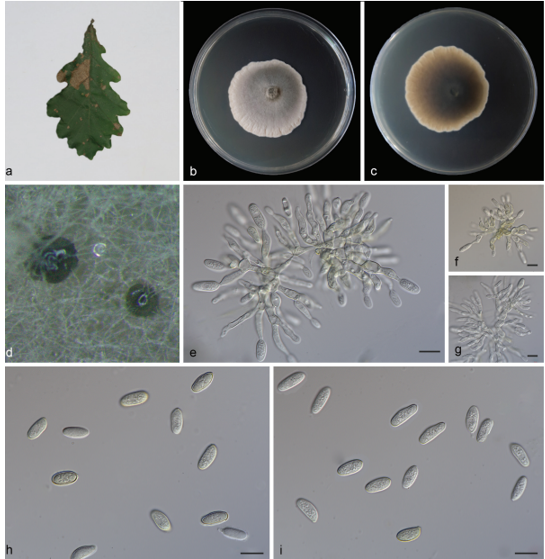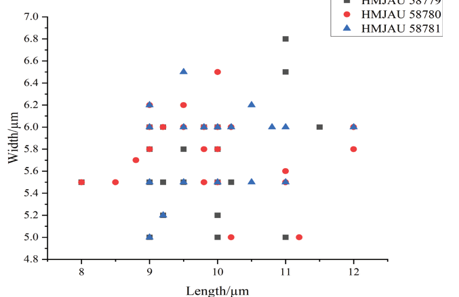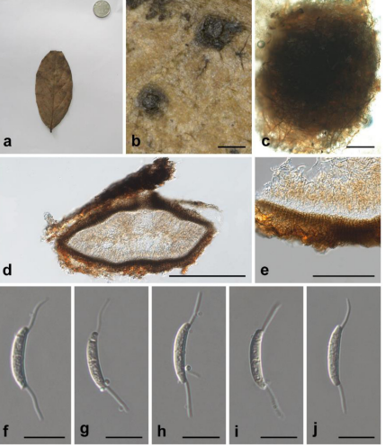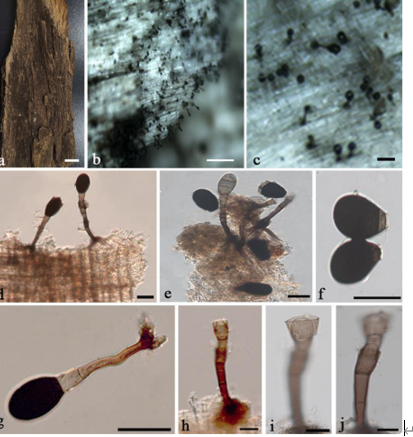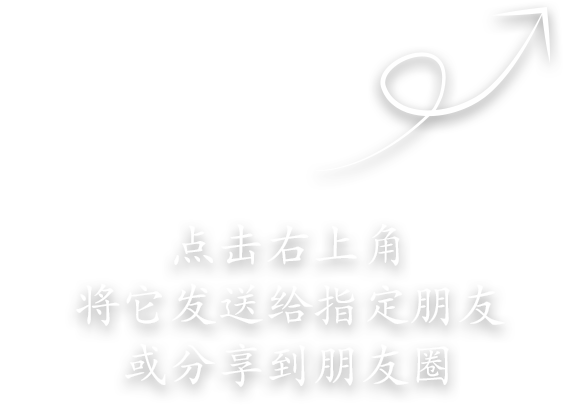Paramonodictys solitarius N.G. Liu, K.D. Hyde & J.K. Liu 2020
Index Fungorum number: IF557093; Facesoffungi number: FoF 06710
Holotype: CHINA, Guizhou Province, Guiyang, Guizhou Academy of Agricultural Sciences, on decaying wood, 27 August 2018, N.G. Liu, NKY036 (MFLU 19-2854, holotype), ex-type living culture, GZCC 20-0007.
Morphological description
Sexual morph Undetermined. Asexual morph Hyphomycetous. Colonies on natural substrate superficial, effuse, scattered, solitary, black. Mycelium partly immersed, partly superficial, composed of brown, branched, septate hyphae. Stroma present, erumpent, erect, subcylindrical or truncated-cone-form, pale brown to olivaceous brown, up to 20 μm high. Conidiophores absent. Conidiogenous cells monoblastic. Conidia 50–87 × 40–61 μm ( x̄ = 64 × 52 μm, n = 30), solitary, dictyosporous, muriform, globose or subglobose, olivaceous brown to dark brown, broadly rounded at apex, sometimes subtruncate at base.Culture characteristics: Conidia germinating on water agar within 24 h. Germ tubes produced peripherally. Mycelia superficial, irregularly circular, with entire edge, greyish white from above, dark brown at centre, pale brown at circumference from below.
Habitat: decaying wood.
Distribution:China.
GenBank Accession: ITS :MN901152;LSU:MN897835;SSU:MN901118;RPB2: MT023015;TEF1-α:MT023012.
Notes: Tanaka et al. (2015)provided sequence data for an unnamed Monodictys species without any morphological information. However, molecular comparison indicated our collection and their strain are the same species (Fig. 59). Paramonodictys solitarius, characterised by absence of conidiophores, differs from Pseudomonodictys tectonae Doilom et al. The latter has semi-macronematous to sometimes macronematous conidiophores. Moreover, the conidia of P. solitarius are produced directly from stroma.
Reference: Kevin D. Hyde1,5,8,22 · Yang Dong2,3 · Rungtiwa Phookamsak1,5,6,7 et al.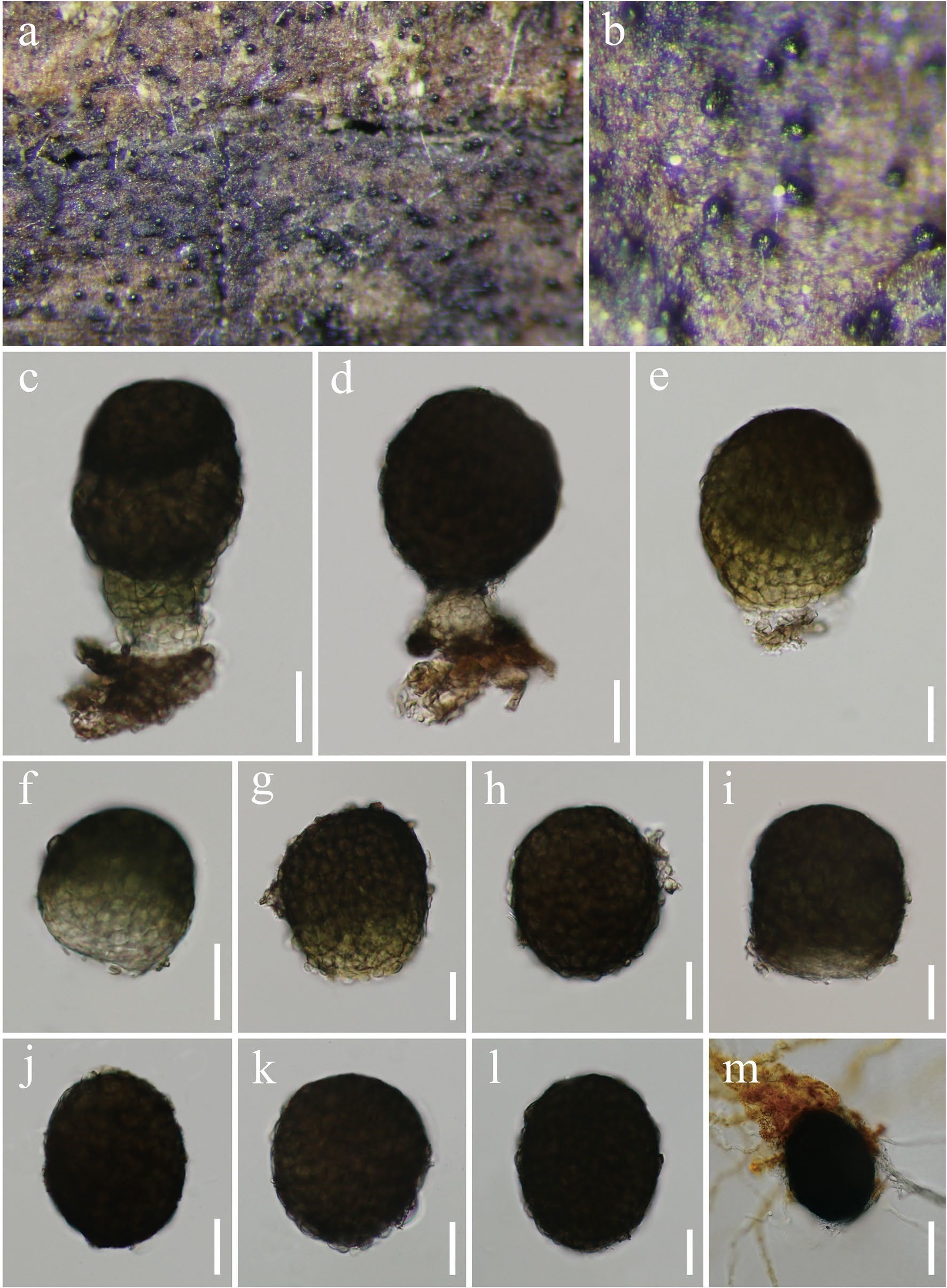
Paramonodictys solitarius (MFLU 19-2854, holotype). a, b Colonies on natural substrate. c, d Conidia on stromata. e–l Conidia. m Germinated conidium. Scale bars: c–l = 20 μm, m = 30 μm


